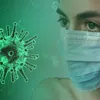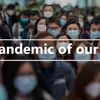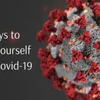COVID-19: To test or not to test
COVID-19 is a new virus and testing protocols are constantly evolving. This is an explainer for what each test does in simple terms.

Every time you hear someone cough or get a slight temperature, you are probably thinking of COVID-19 and rush to wash your hands, gargle, and disinfect. Such are the times we live in. If you are wondering what I am talking about, you have successfully self-isolated yourself from WhatsApp and some social viruses with it.
You wonder why you cannot get access to a test when you can pretty much get any test done in the comfort of your home, especially in India. Remember, this is a new virus and testing protocols are constantly evolving. Many countries that have been affected by COVID-19 before India have adopted several different methods of testing. Each country has a protocol that has been created by the government to effectively create containment within their resources.
My attempt here is not to get you to rush and do all the tests but to explain what each test does in simple terms. The decision to test would be with your doctor and government policy in a pandemic situation.
If you think you have been exposed to COVID-19 and develop a fever and symptoms such as cough or difficulty breathing, it might be worthwhile calling a doctor to first assess your symptoms. This disease has been rather unkind to the elderly population and to those at risk for underlying chronic conditions like diabetes, lung disease, or heart diseases.
My plan is to simplify some of the tests used for COVID-19. Actually, these are common tests used for many different diseases. Perhaps this can give you some extra confidence in reading about your lab reports next time. This is not a comprehensive list and you should always follow guidelines from your doctor.
Prevention
Building a strong immune system is key to preventing not just COVID-19 but many more conditions. Your immunity is affected by multiple factors such as diet/lifestyle, current health status (conditions like hypertension, diabetes, heart disease) genetics, etc. Understanding innate/genetic susceptibility and reducing risk via customised intervention through genetic counselling with diet and lifestyle modifications and screening and testing options can go a long way towards building immunity for today and the future.
Screening
Antibody testing
Antibody testing essentially looks for antibodies for COVID-19 similar to tests you might have done for HIV. Antibodies are those little defence warriors in our body and get created when a pathogen or a foreign body tries to get in- eg: SARS-Cov2. While this may not be a foolproof method for confirming if someone has coronavirus, screening using this can be very helpful as many patients do not show any clinical sign for a few days but are carrying the virus around. Some companies have been given emergency use authorisation from the USFDA. China and Singapore have effectively used these tests that can be done in 15 minutes or so using blood.
PCR
This is a term you have all heard a lot at least in the last couple of months. If you want to sound like someone who knows what we are talking about, just know the full form- polymerase chain reaction. Now break it down one after the other. It uses an enzyme called polymerase to make DNA copies using a chain reaction. The most exciting fun fact about PCR is its discoverer Nobel laureate Kary Mullis and how his eureka moment came about when he was high on hallucinogens. Again, this is not a recommendation for a new discovery but a factoid.

Pathogen
This is just the DNA or RNA virus that you are trying to measure.
In order to detect a pathogen, there should be enough copies of it. Pathogen DNA serves as a template that can be copied millions of times and eventually detected. We also need the nucleotides that you will need for synthesis- remember the A, C, T and G, some primers and DNA polymerase that initiates the reaction. There are three cycles of heating and cooling that do the magic of multiplying.
A primer: What’s that?
A primer is just that, something that we would introduce in the beginning so that a reaction can be started and also to show where it ends strangely by attaching on the starting part on the other strand. DNA strands are coupled together and only heat does them apart. When they are apart, the primers take their positions on both strands at the 3‘ end. Just think of 3’ as the starting point. These primers are small in size.
DNA Polymerase
In case no one told you, when something ends in 'ase', it is an enzyme. This enzyme knows how to start a reaction. As soon as it starts, the nucleotides in the tube quickly come and attach to the separated strand. Voila! We have two new strands of the virus.
And the process begins again. From these two, we get four and so on. In an hour or so you can get a million copies to detect.
RT PCR
RT in RT PCR stands for real time, not retweet as you may be more familiar with. Here the main difference is the use of fluorescent probes that you add to the mix. These probes tell us in real time how many copies have been made.
There is an extra piece of equipment called a spectrofluorometer within the RT PCR equipment, along with the thermocycler, which detects the fluorescent probes.
Probing question: What does a probe do? A probe is a small DNA sequence that binds to the target DNA with a fluorescent probe on one side and a quencher on the other. This is a great invention, as the probes don’t light up when they are close. When the temperature reduces and synthesis begins by the DNA polymerase, the probe is degraded and the fluorescence side and quencher are separated. The fluorescent part emits light. This is detected by the spectrofluorometer.
But wait: Isn’t SARS-Cov2 an RNA virus?
Yes, we need to do something more. We need to make DNA from RNA. We need to do what is called reverse transcription. Remember transcription made RNA from DNA, now we are doing the reverse. Here we use an extra enzyme called RNA polymerase. The extracted mRNA from the virus is used and then the RNA is made into RNA and the above steps will be used.
That is a lot of information for you all. Just remember the names and that the SARS-Cov2 is an RNA virus and RT PCR is what CDC and other agencies have been using as a confirmatory test. Sequencing is another method to do this as well. Since not many are using it in clinical settings, we can save it for another time.
X rays
I am fairly certain you are aware of X rays. What you may not know is that Double Nobel Laureate Madam Curie ( the only woman scientist most people remember) used her expertise by bringing these machines to World war 1 by making it mobile in a car to treat those soldiers at war. There was also one car that she herself drove called the little curie. Hah! Made you more curious, haven’t I?

CT scans
CT scans can be an especially quick way to assess the damage done to the lungs. In China, they used rapid CT scans to quickly assess if a patient had infected lungs. Radiologists can detect how bad your lung has become by looking at different shades of grey on your CT scan.
Diagnostics for patients
As an evolving understanding of the COVID-19 continues, one of the important aspects to understand is how some patients may develop what is called a cytokine storm syndrome. So what is exactly happening? Basically our own immune system goes berserk and creates a tsunami of an immune response possibly based on some risk factors including genetics. This is why a serum ferritin test can help assess.
Ferritin
Ferritin is a blood protein that contains iron. A ferritin test helps your doctor understand how much iron your body stores. As Dr Krishnam Raju, a well-regarded cardiologist and researche,r explained to me, low ferritin means that your bank balance of iron is low in the body. Now, why is that important? When there is a cytokine storm in your body, these levels will be unusually high. Your doctor can help understand if your body has been attacked by a cytokine storm and suggest next steps.
Complete blood count and other routine blood work
CBC or Complete Blood Count is not a test to diagnose COVID-19 but is used by doctors to assess the health of the patient. This is one of the simplest tests that look at the size, number and maturity of the red blood cells popularly known as the RBC, WBCs, and platelets.
- The red blood cells carry oxygen and fight anaemia and fatigue. I am certain you have a friend who has boasted about her/his amazing haemoglobin of 14 or more.
- White blood cells are warriors that fight infection. So when we see large numbers it shows there is an infection and the WBC army is ready to fight back. When the numbers are low it may be due to medicines you are taking or some rheumatic diseases. Decreased levels may indicate certain rheumatic diseases or reaction to a medication.
- Platelets prevent the body from bleeding and bruising easily. It is usually performed to check for a blood infection.
Testing within resources is a challenge when the supply chains have been cut off and the number of testing facilities with appropriate instruments and certifications are too few within the government labs. We certainly hope that the government of India opens up to the private sector in tacking this challenge.
Anu Acharya is the founder and CEO of Mapmygenome.in
(Disclaimer: The views and opinions expressed in this article are those of the author and do not necessarily reflect the views of YourStory.)










